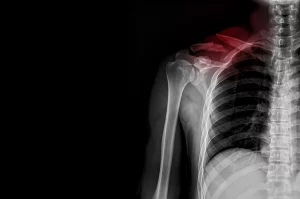 I should own stock in Rubbermaid. During periods of transformation, inspiration, or moving, you will be likely to find me in a Target parking lot at 10pm trying to cram as many storage bins as possible into my car. It makes me feel good knowing that my stuff will have a place to live and that mice will (probably) not colonize my feather bed during the summer. (Truth: One time mice colonized my feather bed during the summer because I had my feather bed in a closet and not a Rubbermaid bin. I lived in Vermont, so it made more sense to have a feather bed at all.)
I should own stock in Rubbermaid. During periods of transformation, inspiration, or moving, you will be likely to find me in a Target parking lot at 10pm trying to cram as many storage bins as possible into my car. It makes me feel good knowing that my stuff will have a place to live and that mice will (probably) not colonize my feather bed during the summer. (Truth: One time mice colonized my feather bed during the summer because I had my feather bed in a closet and not a Rubbermaid bin. I lived in Vermont, so it made more sense to have a feather bed at all.)
As a behaviorist, I love Rubbermaid bins for another reason. They are the place that toys go when they get thrown, used to clobber another kid (or parent!), or when the owner of said toys is simply being too bad (I am not afraid of labeling some behavior simply as yucky, but only if the owner of that behavior is able to use better behavior most of the time) to play.
The other reason I love using the “bin of no return” is that is allows you, as a parent, to act swiftly and immediately and not spend so much energy yapping to your toddler about why hitting is bad 200 times before you finally snap and do something. Save that energy. Use it to write a poem. Or to find the tweezers (we are always losing the tweezers in my house). Or to bake bran and chia muffins, as featured in the NYT last week (please don’t save any for me). The point is, all of those warnings and next times and if you don’ts and pleases are wastes of energy if they don’t change the behavior that you object to. PS: If you don’t object to kicking and biting and hitting and stuff, you are reading the wrong column.
It is a simple strategy:
Get a big bin and label it with a Jolly Roger on the side that will be facing out. Or the poison tongue-sticky-outy face. Or nothing. I was kidding about the skull and crossbones. Maybe. But, label it with something that your child can see from far away and distinctly sends a message of “Abandon hope all ye who enter here.” It may not fit your décor, but a lovely red X of masking tape also gives a clear message. Put it high up on something like a cabinet or a shelf (that your child can’t climb) so that it is visible.
On the other side of the bin, label the steps the child will need to take to get his stuff back. Pictures help as cues. These should be things well within your child’s level of competence, but clearly meant to “make up for” the hitting, kicking, throwing, whatevering that took place. Sweeping is a good one. Giving everyone hugs is also good.
Talk to your child about what is going to happen. If your child has no issues with processing LOTS of language, the conversation alone should be fine. If your child has a difficult time remembering and using information that has just been presented verbally, try a social story or a series of drawings (like a comic strip).
When your child uses a toy inappropriately (or does something else to lose the toy) take it and put it in the bin. Wait out the storm. An important part of using this strategy is that you, as noted, DO NOT GIVE WARNINGS before swooping in and grabbing that toy. You should have given your warnings in the form of a social story or conversation many times already. Just go in like a ninja and make it disappear. This works great for TV remotes as well! And iPads! The plug to the TV!
Once your child calms down enough to listen, go grab the box, and follow the steps you have laid out (and already discussed) to get the things back. There is a benefit to having this be activity based and not time based, as most kids can wait you out, but you really have to be in the right place in order to slog through a bunch of reparative chores. Another strategy is to have the side of the bin function like a raffle of chores (with a bunch of pieces of paper with different tasks on each), so there is an element of chance to it—you might pull out “swab the deck” or you might just have to feed the parrot. Pirate Themed Advice (copyright Liz Schwandt)!
If your child hits/kicks/bites/whatevers during the “making it up” phase, just plunk the box right back up and wait them out again. The clock restarts at this point—even if they were almost done, they have to go through the list again. Work on your rock opera while they yell. This is also a reminder not to make the “get back the toy” list too difficult to complete. There is no harm in starting small. Hopefully you will not need this strategy for very long!
Once they complete all the steps, return the toy/s. Lather, rinse, and repeat.
If you have more specific questions, or you’d like to give this strategy a go and would like more coaching, check in with us at info@clovermcgrath.com or at www.clovermcgrath.com. As always, if you have concerns, a check in with a behaviorist or your pediatrician is always appropriate. — Liz Schwandt

















